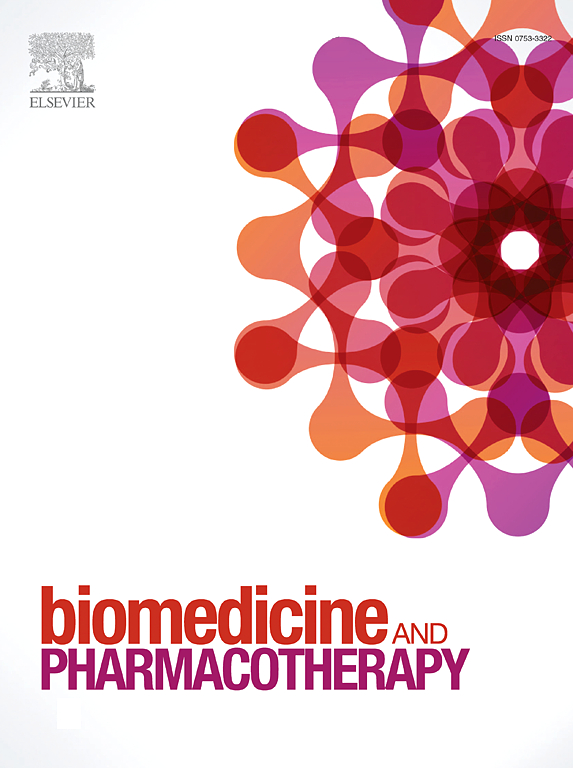Glycosyl terpenoid-rich fraction of TeMac™ attenuates oxidative stress, inhibits cholinesterases enzyme activities, and protects brain against scopolamine-induced histopathological alterations in rats
IF 6.9
2区 医学
Q1 MEDICINE, RESEARCH & EXPERIMENTAL
引用次数: 0
Abstract
Background
Alzheimer's disease (AD) is the most commonly diagnosed form of senile dementia, with limited therapeutic options. Neuronal damage is caused by factors secreted by inflammatory cells but also, the lack of antioxidants to prevent oxidative stress and help maintain neuronal integrity, which is crucial for cognition and memory are mediators of AD. Terminalia macroptera barks contain glycosyl terpenoids, known for their strong antioxidant properties. This study investigated the antioxidant and neuroprotective effects of the glycosylic terpenoid-rich fraction of Terminalia macroptera (GT-TeMac™) in scopolamine-treated rats.
Methods
Glycosylic terpenoids were identified by LC-MS and antiradical activity tests (DPPH and ORAC) were performed. Cholinergic cognitive dysfunction and oxidative stress were induced in male wistar rats, by intraperitoneal injection of scopolamine (1 mg/kg BW/day) for seven consecutive days. GT-TeMac™ at 100 mg/kg and Donepezil at 5 mg/kg body weight were administered orally 60 min after scopolamine. After treatment, rat were sacrificed and brains were collected for the evaluation of cholinergic enzyme activity, oxidative stress markers and histopathological analysis. In vitro study was carried out to assess the ability of GT-TeMac™ to scavenge free radicals and suppress H2O2-induced ROS production in SK-N-SH cells. In addition, the ability of GT-TeMac™ to restore cell viability reduced by acrolein was performed.
Results
Chebuloside II, Sericoside, 24-deoxysericoside, arjunglucoside 1 and 23-galloylarjunolic acid 28-O-glucopyranosylester were identified by LC-MS. GT-TeMac™ has a SC50 of 9.54 μg/mL and an ORAC value of 1130 µM Trolox equivalent per mg of GT-TeMac™. The administration of GT-TeMac™ protected against cognitive decline in AD by inhibiting cholinesterase metabolism, modulating oxidative stress parameters and protecting hippocampal areas. Additionally, GT-TeMac™ absorbed and eliminated ROS produced by hydrogen peroxide in SKNSH cells and restored cell viability reduced by acrolein.
Conclusion
These findings suggest that the active ingredients in GT-TeMac™ are promising drug candidates for the treatment of cognitive disorders associated with oxidative stress in AD.
求助全文
约1分钟内获得全文
求助全文
来源期刊
CiteScore
11.90
自引率
2.70%
发文量
1621
审稿时长
48 days
期刊介绍:
Biomedicine & Pharmacotherapy stands as a multidisciplinary journal, presenting a spectrum of original research reports, reviews, and communications in the realms of clinical and basic medicine, as well as pharmacology. The journal spans various fields, including Cancer, Nutriceutics, Neurodegenerative, Cardiac, and Infectious Diseases.

 求助内容:
求助内容: 应助结果提醒方式:
应助结果提醒方式:


